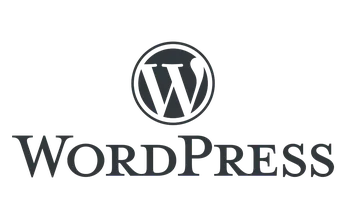Google's Knowledge Graph is a powerful knowledge base that powers many of the search engine’s features and services. It is a system designed to understand entities and their relationships, providing users with more accurate and relevant search results. In this article, we will explore the history, technology, features, benefits, applications, and future directions of Google's Knowledge Graph.
History and Development of Google's Knowledge Graph
Google's Knowledge Graph was first introduced in 2012 as a significant step towards semantic search, aiming to understand the meaning behind users’ queries rather than merely matching keywords. The technology has since evolved, becoming an integral part of Google’s search algorithm and powering various features, such as the Knowledge Panel, Featured Snippets, and Direct Answers.
The technology behind Google's Knowledge Graph relies on semantic search and natural language processing techniques to identify entities and their relationships within data sources. Google's Knowledge Graph gathers information from a variety of publicly available data sources, including Wikipedia, Wikidata, Freebase, and the CIA World Factbook, among others. While this approach has proven successful in delivering accurate and relevant search results, it also presents challenges related to data accuracy and reliability, as well as ethical concerns around data privacy.
Features and Benefits of Google's Knowledge Graph
Google's Knowledge Graph offers several features that enhance the search experience, including:
- Entity recognition and disambiguation: Google's Knowledge Graph can identify entities within a query and distinguish between different meanings or uses of those entities. For example, it understands that “apple” can refer to either the fruit or the tech company.
- Relationship extraction and entity linking: The system can extract relationships between entities and link them together, providing users with more comprehensive search results. For instance, a query about “Paris” will return information not only about the city but also about its landmarks, history, and culture.
- Information integration and summarization: Google's Knowledge Graph aggregates information from various sources and presents it in a concise and easily digestible format, often within the Knowledge Panel or as a Featured Snippet.
The benefits of using Google's Knowledge Graph include:
- Improved search relevance and accuracy: By understanding entities and their relationships, Google's Knowledge Graph can deliver more accurate and relevant search results, reducing the need for users to sift through multiple pages to find what they are looking for.
- Enhanced user experience and engagement: With more informative and engaging search results, users are more likely to stay on Google’s platform, increasing the likelihood of ad impressions and click-through rates for businesses.
- Opportunities for business intelligence and marketing insights: By analyzing data from Google's Knowledge Graph, businesses can gain valuable insights into consumer behavior, preferences, and interests, informing their marketing strategies and tactics.
Applications of Google's Knowledge Graph
Google's Knowledge Graph has various applications in different areas, including:
- Personalized search and recommendations: By understanding users’ preferences and context, Google can deliver more personalized search results and recommendations, improving user satisfaction and engagement.
- Content creation and optimization: Google's Knowledge Graph can help content creators and marketers better understand their audience’s interests and needs, informing their content strategy and ensuring that their content is optimized for relevant entities and relationships.
- Knowledge management and discovery: Google's Knowledge Graph can serve as a foundation for taxonomy and ontology development, enabling more effective information retrieval and exploration.
Future Directions and Challenges of Google's Knowledge Graph
As artificial intelligence and machine learning continue to evolve, so too will Google's Knowledge Graph. Emerging trends and technologies, such as voice search and conversational interfaces, will require the system to become even more sophisticated in its understanding of entities and their relationships.
However, ethical considerations and regulations around data ownership, control, algorithmic transparency, and accountability will also play a significant role in shaping the future of Google's Knowledge Graph. Businesses and marketers must be mindful of these challenges and adapt their strategies accordingly to maintain user trust and privacy while leveraging the benefits of this powerful knowledge base.
FAQ Section
Q: What is Google’s Knowledge Graph?
A: Google's Knowledge Graph is a powerful knowledge base that powers many of Google’s features and services. It is designed to understand entities and their relationships, providing users with more accurate and relevant search results.
Q: How does Google's Knowledge Graph work?
A: Google's Knowledge Graph uses semantic search and natural language processing techniques to identify entities and their relationships within data sources, gathering information from various publicly available data sources like Wikipedia, Wikidata, Freebase, and the CIA World Factbook.
Q: What are the benefits of using Google's Knowledge Graph?
A: The benefits include improved search relevance and accuracy, enhanced user experience and engagement, and opportunities for business intelligence and marketing insights.
Q: How can businesses leverage Google's Knowledge Graph?
A: Businesses can use Google's Knowledge Graph to gain valuable insights into consumer behavior, preferences, and interests, informing their marketing strategies and ensuring that their content is optimized for relevant entities and relationships.
Q: What are some applications of Google's Knowledge Graph?
A: Applications include personalized search and recommendations, content creation and optimization, and knowledge management and discovery.
Q: How will emerging trends and technologies affect Google's Knowledge Graph?
A: As artificial intelligence and machine learning continue to evolve, Google's Knowledge Graph will need to become more sophisticated in its understanding of entities and their relationships. Voice search and conversational interfaces will also require the system to adapt.
Q: What ethical considerations and regulations should businesses be aware of when using Google's Knowledge Graph?
A: Businesses must be mindful of challenges related to data accuracy and reliability, as well as ethical concerns around data privacy, ownership, control, algorithmic transparency, and accountability.
Conclusion
Google's Knowledge Graph is a transformative technology that has significantly impacted how users search for and consume information online. By understanding entities and their relationships, Google's Knowledge Graph delivers more accurate, relevant, and engaging search results, providing businesses with valuable opportunities for marketing insights and competitive advantage. As the technology continues to evolve, it will be crucial for businesses and marketers to stay informed and adapt their strategies to leverage its benefits while addressing emerging ethical considerations and challenges.


